Joy Marie Clarkson's Blog, page 6
February 17, 2020
Church Mothers (Oliver B. Langworthy)

Who were the women of Cappadocia?
I first discovered Saint Macrina researching the major Christian theological accounts of the emotions. As I researched, the name Macrina kept popping up. She was the sister of Gregory of Nyssa and Basil the Great, two of the Cappadocian fathers, who were important theologians who lived during the 4th century. Their work emerged after the church had endured some of the most severe persecution of Christians in the Roman Empire. Their writings are very, very important, contributing to the creeds, monasticism, theology as we encounter it today. To my great delight, I discovered that Macrina and her mother actually educated Gregory of Nyssa. Together with her brother Peter, Macrina started a religious community, dedicated to service of the poor and prayer, that Basil drew from when he started his own monastic order. Her monastic order became the foundation for the monastic communities still thriving in the Orthodox tradition.
Gregory of Nyssa describes Macrina as "father, teacher, guide, mother, counsellor in every good" and wrote three books about her.She was the older sister, highly regarded, deeply loved. In fact, Gregory was so devoted to her that he wrote a biography of her after she died, which was almost unheard of for a woman in that era (The Life of Saint Macrina). He also wrote a book about her death, Modelled after Plato's Phaedrus, in which Macrina is imagined as Socrates and he, the great Cappadocian father, as her humble student (Ta Makrinia: Dialogue on the Soul and Resurrection). She is remembered as "Macrina the Teacher." In images and icons, she's usually carrying a pen and a cross, symbolic of her calling: to teach and to follow the way of the cross.
In Macrina, I found a friend, a model, a guide. I wondered if there were other wonderful women like her that I had never learned about.… and there are!
In this week’s episode we explore the stories Saint Macrina the Elder, Saint Macrina the Younger, Saint Gorgonia, and Saint Nonna, the remarkable women who shaped the Cappodocian church. These women were mothers, teachers, ascetics, wives, administrators of estates, advocates for the poor and helpless. Their callings were diverse, but their devotion to becoming like Christ indelibly shaped the history of the church.
Join me and Dr. Oliver B. Langworthy of Saint Andrews to explore the histories of these remarkable women!
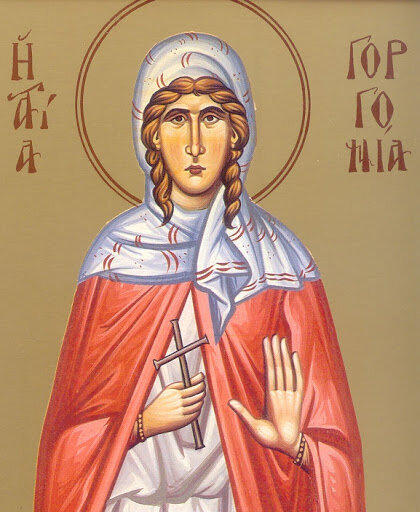
Icon of Saint Gorgonia
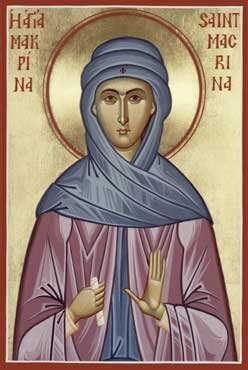

Icon of St Nonna, wife of Gregory of Nazianzus
Today’s Guest…Dr. Oliver B. Langworthy
Dr. Oliver B. Langworthy is an Associate Lecturer in Patristics in the School of Divinity, and an Academic Editor with the St Andrews Encyclopaedia of Theology. He received his doctorate in Historical Theology from the University of St Andrews, and his first monograph on pneumatology and soteriology in Gregory of Nazianzus is forthcoming from Mohr Siebeck. He researches on the intersection of culture and theology in Greek Patristic theology, and was the recipient of the 2017 Journal of Ecclesiastical History Eusebius Prize for his work on the title of theologian in Late Antiquity.

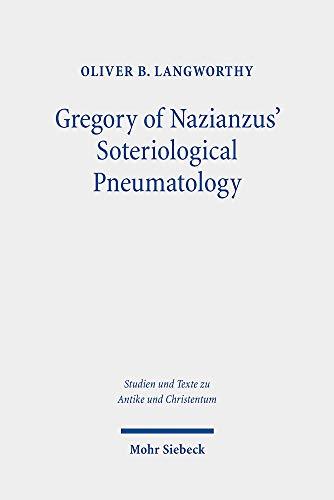
Gregory of Nazianzus Soteriological Pneumatology (Studien Und Texte Zu Antike Und Christentum / Studies and Texts in Antiquity and Christianity)
By Oliver B. Langworthy
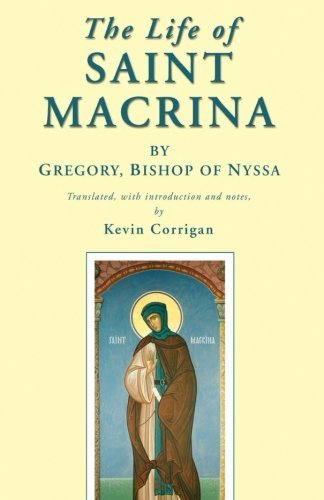
The Life of Saint Macrina
By Gregory of Nyssa
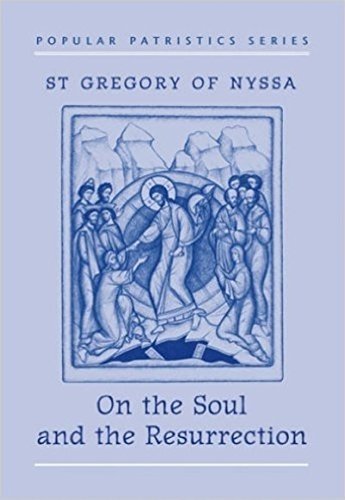
On the Soul and the Resurrection: St Gregory of Nyssa
By of Nyssa, Saint Gregory
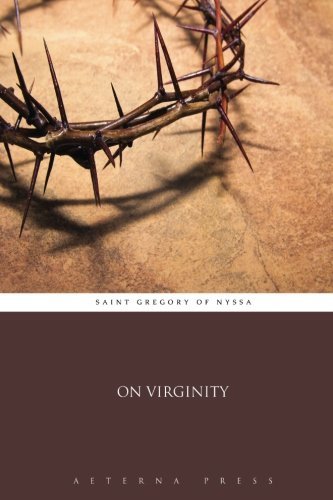
On Virginity
By Saint Gregory of Nyssa, Aeterna Press
February 2, 2020
The Ragamuffin Bard

Welcome back to a brand new season of Speaking with Joy! This episode sings the praises of Rich Mullins, an artist steeped in scripture, with a heart like an open wound, and eyes that saw glory in creation. Listen below!

Be praised for all Your tenderness by these works of Your hands
Suns that rise and rains that fall to bless and bring to life Your land
Look down upon this winter wheat and be glad that You have made
Blue for the sky and the color green that fills these fields with praise
— Rich Mullins, "The Color Green"
FUN FACT: Rich Mullins and his friends wrote a Rock Opera based on a Wild West retelling of the life of Saint Francis. You can read the lyrics from the sight below…
Canticle of the Plains (Life of Saint Frank)
We are frail
We are fearfully
And wonderfully made
Forged in the fires
Of human passion
Choking on the fumes
Of selfish rage
And with these our hells and our heavens
So few inches apart
We must be awfully small
And not as strong as we think we are
— Rich Mullins, "Not As Strong As We Think We Are"
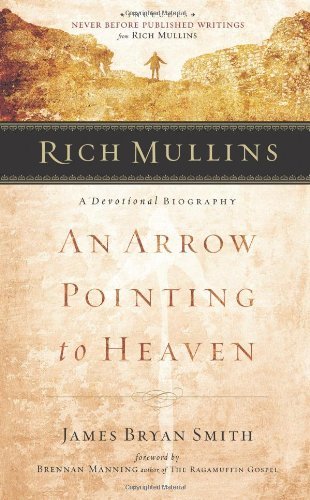
Rich Mullins: A Devotional Biography: An Arrow Pointing to Heaven
By James Bryan Smith
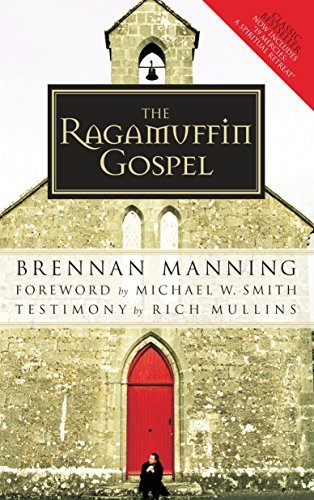
The Ragamuffin Gospel: Good News for the Bedraggled, Beat-Up, and Burnt Out
By Brennan Manning
December 23, 2019
Christmasing with the Sally Mama

Merry (Almost) Christmas, Friends!
This week I recorded a special Christmas episode with my mama! We talk about our Christmas fun last year in Oxford, and our family traditions. I hope it brightens your day. :)
To close off our advent reflections, I encourage you to experience a Lessons and Carols Service. There’s two ways to do that…Listen to the classic King’s College Cambridge album….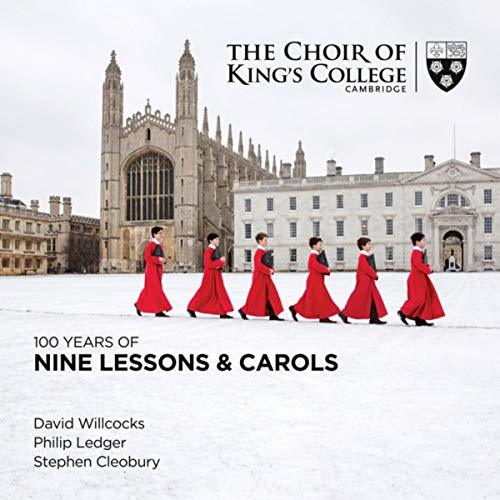
100 Years of Nine Lessons & Carols
Kings College Cambridge
or tune into my secret podcast episode on Patreon… (this supports the podcast!)
Patreon — Lessons and Carols!
Wishing you a very merry Christmas!

December 15, 2019
The Good Shepherd

Like a shepherd He will tend His flock,
In His arm He will gather the lambs
And carry them in His bosom;
He will gently lead the nursing ewes.
— Isaiah 40:11
In Advent, we prepare for the coming of Christ. But who is Christ to us?
I pondered this question as I listened to Handle’s masterful musical work The Messiah while working on my computer in a coffee shop. This wonderful piece of music traces all the messianic anticipations of the Old Testament, their longing for a heavenly king, a ruler, a judge, a mighty counsellor. But hidden in there is another title: the good shepherd. This one struck my heart. The coming Christ is to be a king, a ruler, a judge, but he is also to be a shepherd, tender, patient, caring.
As I listened to “He Shall Feed His Flock” and tears sprung into my eyes. There is a tenderness, a safety, an intimacy expressed in the simple words of Isaiah’s prophecy: “He will gather the lambs and carry them in his bosom” and I am one of his lambs. At the time I was feeling fragile, unable to make myself be okay. And in those simple words I heart truly good news: Yes, Christ will come to rule and reign, but he also came to tend, to gather, to carry, to gently lead. My heart needed to hear this.
Christmas is a joyful time, but also a tender time.Many people carry sadness, disappointment, or guilt at this time of year.And that is why I think it is important to dwell on Christ as the shepherd, gently caring for us. This idea was brought home to me in a special way when I found a series of paintings of Scottish Highland shepherds by Richard Ansdell. I’ve lived in Scotland for the last two and a half years, so something in these pictures was familiar. They gave me a new way to image Jesus’ tenderness, and a new way to receive his love.
So this week in the podcast, we will be anticipating, dwelling on, and appreciating one of the messianic promises of advent: that the good shepherd will come and lead us with compassion.
God’s heart toward you is tender, loving, he longs to carry you. This is the truth we will explore in this week’s advent podcast and meditation.I recorded this episode with one of the deepest, most loving people I know: Gwennie.
Gwennie is one of my family’s oldest and dearest friends. She and my mother were missionaries together in Poland in the 70’s. I grew up with many frequent visits to Eben house, Gwennie’s beautiful Kentucky cottage. Gwennie is closer than family, and for years she visited us before Christmas. And this year I had the great pleasure of visiting Gwennie! We’d planned on this visit for over two years. I’m typing this in the airport, and I just have to say: this visit was a gift! Gwennie very graciously agreed to record this podcast with me. Gwennie has a deep knowledge of scripture, a rich, contagious laugh, and many stories about me as a little girl. All this to say… I think you’ll really enjoy this episode. :-)
listen above and follow along in the notes below. Literary — Isaiah 40
Comfort, comfort my people,
says your God.
Speak tenderly to Jerusalem,
and proclaim to her
that her hard service has been completed,
that her sin has been paid for,
that she has received from the Lord’s hand
double for all her sins.
A voice of one calling:
“In the wilderness prepare
the way for the Lord[a];
make straight in the desert
a highway for our God.[b]
Every valley shall be raised up,
every mountain and hill made low;
the rough ground shall become level,
the rugged places a plain.
And the glory of the Lord will be revealed,
and all people will see it together.
For the mouth of the Lord has spoken.”
A voice says, “Cry out.”
And I said, “What shall I cry?”
“All people are like grass,
and all their faithfulness is like the flowers of the field.
The grass withers and the flowers fall,
because the breath of the Lord blows on them.
Surely the people are grass.
The grass withers and the flowers fall,
but the word of our God endures forever.”
You who bring good news to Zion,
go up on a high mountain.
You who bring good news to Jerusalem,[c]
lift up your voice with a shout,
lift it up, do not be afraid;
say to the towns of Judah,
“Here is your God!”
See, the Sovereign Lord comes with power,
and he rules with a mighty arm.
See, his reward is with him,
and his recompense accompanies him.
He tends his flock like a shepherd:
He gathers the lambs in his arms
and carries them close to his heart;
he gently leads those that have young.
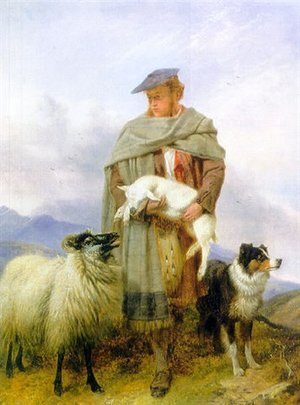
2. Musical — He Shall Feed His Flock, George Fredric Handel

Handel’s Messiah traces the line between the messianic prophecies of the Hebrew Bible, and their fulfilment in Jesus. It is one of the greatest pieces of Western Music.
Written in 1741, The Messiah is a remarkable piece of music that traces the line between the messianic prophecies of the Hebrew Bible and their fulfillment in Jesus. It quickly became a classic and is often played around Christmas time as a celebration of and meditation on God’s loving plan of salvation. One of the remarkable things about the libretto is that it often ties together the Old Testament texts with new. In this beautiful song, he ties together the Isaiah 40:11 passage we examined above with Matthew 11:28-30.
So many of the Messianic prophecies are about God’s kingship, his rule, his judgement, but I love that one of the main images we are give of that Kingship is as a shepherd. These two images seem so far apart— the grand, opulent, powerful king, the simple, earthy, faithful shepherd. But the Messiah we receive is both, and the fulfilment of his kingship is to gather us to his bosom. To love us and treat us tenderly.
Christmas is for the weary and the heavy ladenIt is for those who need to be scooped up in the arms of the good shepherdHis comfort is a part of his kingship.3. Visual — Manchester by the Sea
The movie begins with the death of Joe Chandler, the brother and source of support and love of the main character Lee. Lee is a good, faithful man in many ways, but his life has been unbelievably tragic, and he carries a deep burden of guilt. Joe was the one person who helped lighten this load for him. Joe’s loss is a great one to Lee. When Lee returns to make arrangements for Joe’s funeral, they find that the ground is too hard to dig a grave; he must wait for Spring. The movie, then, takes place while Lee cares for his nephew and waits to bury his brother, following him through grief and hardship.
Finally, near the end of the movie, Lee is able to have a funeral for his brother. The scene is gentle, beautiful, sad but not emotionally manipulative. And singificant for us, “He Shall Feed His Flock” from Handel’s Messiah is playing over the entire scene. As I watched the scene, I saw, for a moment, God’s deep love of his children.
His heart of compassion and grief over our sorrows.His deep longing to gather us into his arms.I thought of the passage that Handel references “Comfort Oh Comfort my people… speak kindly to them and tell them that their warfare is over. Surely, Lee’s character has been through warfare. And as the golden beauty of Handel’s alto sang over Lee’s moment of closure at his brother’s grave, I glimpsed God’s love for us. In all the paint and difficulty of the world, it is only natural to ask “Why would God allow this?” The truth is, I do not know. But what I do know is that Christ was a man of sorrows, acquainted with grief, that he enters into our tenderness and vulnerability. That his heart toward us the heart of a gentle shepherd, longing to hold us to his chest and lead us toward healing.
Like Lee, sometimes we have a hard time receiving that love, but it is there. Waiting gently and patiently.
I pray that you experience that love this advent.
Thank you for listening! If you enjoy Speaking with Joy, and would enjoy extra content and resources (playlists, podcasts, and newsletters galore), consider supporting me on patreon!

Gwennie and me together last year.
December 9, 2019
Advent — Week Two
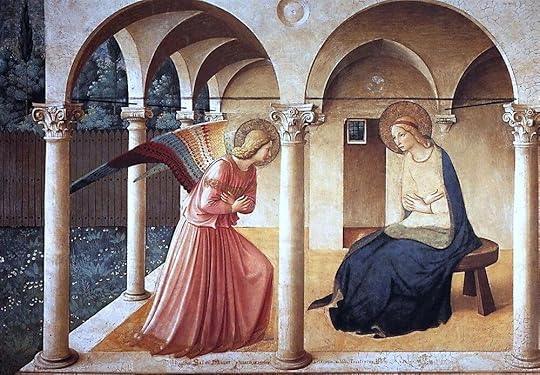
As we journey into the second week of advent, I'm excited to share this week's episode on Mary the mother of Jesus. I remember this episode (which I recorded last year) being one of my favourites to research and record. It was so fruitful to meditate on the fact that Mary is not only the perfect picture of Christian womanhood, but the perfect model of Christian discipleship overall.
Mary willingly says yes to God, Christ dwells within her, and she gives birth to his love for the world. Is there a better description of the Christian life?Listen in and follow along in the notes below…

Madonna of the Magnificat, Sandro Boticelli, 1481.
My soul exalts the Lord,
And my spirit has rejoiced in God my Savior.
For He has had regard for the humble state of His bondslave;
For behold, from this time on all generations will count me blessed.
For the Mighty One has done great things for me;
And holy is His name.
And His mercy is upon generation after generation
Toward those who fear Him.
“He has done mighty deeds with His arm;
He has scattered those who were proud in the thoughts of their heart.
He has brought down rulers from their thrones,
And has exalted those who were humble.
He has filled the hungry with good things;
And sent away the rich empty-handed.
He has given help to Israel His servant,
In remembrance of His mercy,
As He spoke to our fathers,
To Abraham and his descendants forever.
In many churches, pastors go to great lengths to emphasise the fact that Mary was young, unlearned, nothing special, but this is not the picture we are presented with in scripture. Mary’s song (Magnificat) draws from many old Testament prophets, psalmists, and stories, showing that she had a deep knowledge of scripture, that she had pondered it, and perhaps even that she had prepared herself for a moment just like this. Some have even suggested that Mary was dedicated to the temple and raised partially there (like Samuel). We know that she came from a priestly line because her cousin was a priest, and it is obvious that she took that priestly legacy to heart, that she listened when the Torah was read, that the words of the prophets had become the hope of her heart.
This hymn calls to mind numerous examples of Old testament women:Miriam leading Israel in song after the Exodus (Exodus 15:21)Hannah after God answers her prayer (1 Samuel 2:1-10)Deborah after victory in battle (Judges 5)Biblical scholars note that Eve’s story and song is less like the barren narratives of the Old Testaments and more like the Theophanies of the prophets and priests. God has dwelt with her, and she has seen the world as it truly is. In her hymn she proclaims God’s kingdom, the kingdom of God with us.2. Visual — The Consolation of Eve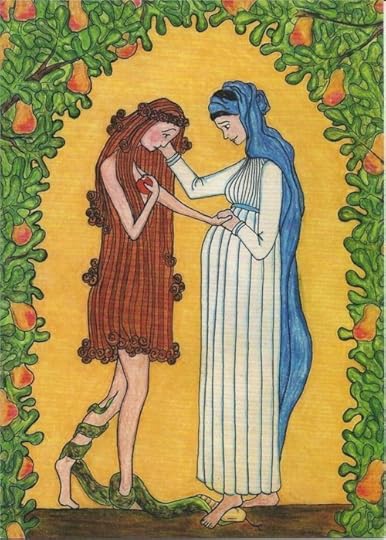
Mary and Eve made by a nun from Our Lady of Mississippi Abbey
Eve used the gift of free will to reject god.Mary used the gift of free will to work with God.
This simple print was made by a nun at Our Lady of Mississippi Abbey. With simplicity and beauty, the image combines many biblical references to show Mary comforting Eve. Mary brings Eve’s hand to her Belly, showing her that the Redeemer is born within her as it was prophesied. She steps on the head of the snake (Genesis 3:14), showing that, just as God promised, Eve’s offspring eventually brought the one who would crush the devil. It is a simple but compelling image, that shows us the magnitude of Mary’s role in God’s plan of salvation for the world.
Mary, the Theotokos (God-bearer), was the first Christian, the first one whom with God dwelt. This is our destiny, and we must follow in her holy footsteps.psssst…. you can buy greeting cards and prints of this image on the monastery’s website. check it out!
3. Musical — Tallis’ MagnificatThe Magnificat is Mary’s prophetic outpouring of praise, and her anticipation of God’s coming kingdom.
As you listen to this beautiful piece by the famous English composer Thomas Tallis, meditate in your heart on Mary’s example of faith, of receptivity, of bravery, of complete surrender to God’s will.
Pray that you too might be a God bearer, in your own capacity.
A blessed advent to you all!
I look forward to next week.
Warmly,
Joy
P.S. do you enjoy speaking with joy? consider supporting me on patreon! where you’ll have access to secret podcasts, playlists, ponderings, and more.
November 30, 2019
Advent — Week One
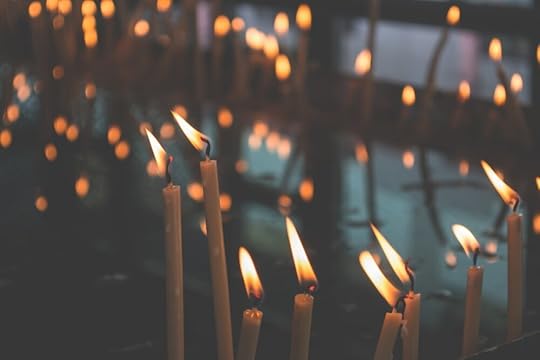
Advent begins this evening.
A curious thing about Christian liturgy is that the day doesn’t begin in the morning, but in the evening. The liturgical day begins not with the hope of morning prayer, but the hesitation of vespers, the gentle entreaties of evening prayer. Today in Saint Andrews, the sun will have been tucked in her seaside bed for four hours when the priest's words ring out, marking a new liturgical season. The chilly faithful will huddle near each other, candles flickering in the darkness, their visible breath rising agains the stone walls of the church. And the priest will pray:
Lighten our darkness, we beseech thee, O Lord;and by thy great mercy defend us from all perils and dangers of this night;
This is where we begin the season of advent, in the dark and cold, waiting with held breath and strained eyes for the coming of a light we can't quite see. Advent comes from the latin word adventus meaning arrival, invasion, or coming. The prophet Isaiah foresaw this coming, writing “The people walking in darkness have seen a great light; on those living in the land of deep darkness a light has dawned” (Isaiah 9:2). Since the very earliest years of the Christian church (the fifth century and likely before), Christians have kept the four weeks prior to Christmas holy, a season of restraint, fasting, hope, preparation, making room in our hearts for the coming of the Christ.
For me personally, advent is a favourite season in the Christian year. It makes room for longing, a time to press into the desire for things to be put right, a recognition that things are not as they should be, a space to admit how much I want Jesus to come near and how far He can feel sometimes. In advent we remember that Christ has come, we invite him to come each day into our hearts, and we prepare our hearts for his final return to judge the living and the dead.
I invite you to join me in keeping advent this year.Whether you are new to advent, an advent veteran, a believer, or an unbeliever, I invite you to join me in this season of patience, of longing, and of preparation. Over the next four weeks, I’ll be posting advent podcasts from the last two years on my podcast. The first one explains the history of advent, and some ways you could celebrate advent with your family. I’ve also attached some advent books, music, and art for you to enjoy as you prepare for Christmas. You can find all this at the link below. I hope they become tools for hope and devotion in your journey toward Christmas.
Much love,
Joy
Find section titled “Advent — Week One: The Coming”
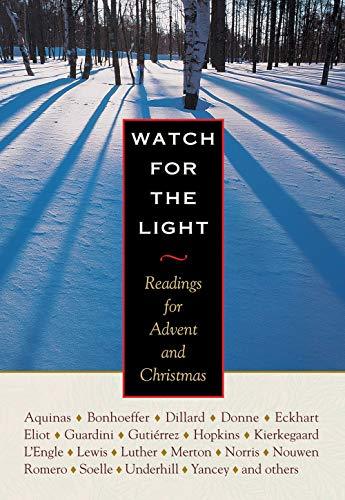
Watch for the Light: Readings for Advent and Christmas
By Dietrich Bonhoeffer, Annie Dillard, Thomas Merton, C. S. Lewis, Henri J. M. Nouwen, John Donne, Meister Eckhart, Dorothy Day, Thomas Stearns Eliot, Edith Stein, Thomas Aquinas, Philip Yancey
Watch for the Light from Plough Publishers
This was a familiar and loved book in my home, which we often read together as a family with tea time after church. It is a masterful collection of advent reflections from some of the best and brightest Christian authors. It draws on many traditions and periods in history to create a companion to advent. It is a lovely resource, and a good one to dip into as needed (i.e. if you miss a reading, all is not lost). I also was delighted to realize that this volume is published by Plough, whose team I had the pleasure of meeting this past summer. I did a podcast with one of the magazine’s editors, Veery Huleatt, should you care to give it a listen.
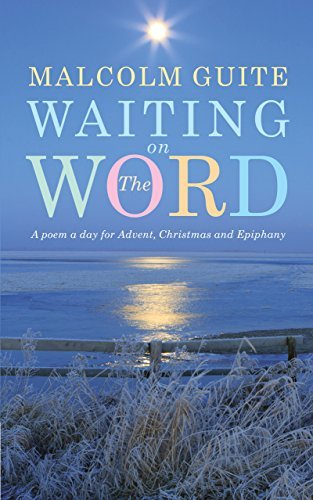
Waiting on the Word: A poem a day for Advent, Christmas and Epiphany
By Malcolm Guite
Waiting on the Word by Malcolm Guite
Oh, I’m so excited to pick this one up again! This is a collection of poems, one for each day of advent, compiled by priest, poet, professor Malcolm Guite (whose work was featured on last week’s episode!). With each poem he includes a devotional reflection. This is a wonderful, contemplative companion to advent. I savoured each day of devotions. This is the advent devotional companion I’ll be using this year.
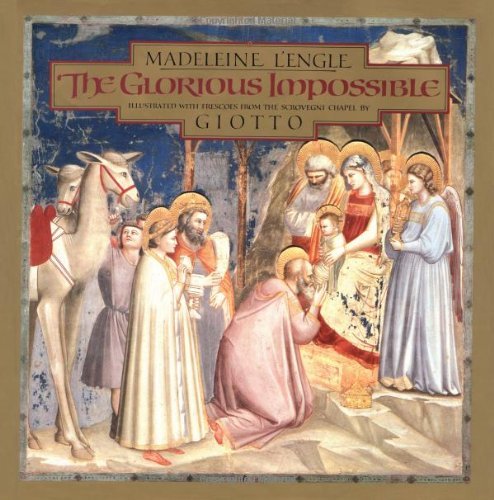
The Glorious Impossible [Illustrated with Frescoes from the Scrovegni Chapel by Giotto]
By Madeleine L'Engle
I didn’t know to love this book until I took a class in my masters on Giotto, the artist who is featured in these pages. Giotto is considered to be one of the first artists involved in the “humanistic turn,” which was an artistic, philosophical, and theological movement which emphasised realism, the human form, and emotion. This movement came about partially as a result of the rediscovery (and translation) of Aristotle’s philosophy in medieval Europe, with all its emphasis on the particularity of goodness. This was coupled with a rising emphasis on the incarnation, that strange and wonderful idea that God had taken on flesh. Giotto’s paintings seem to beautifully contain all these burgeoning movements, honouring the mystery of the incarnation with his gentle, realistic, and yet intensely holy paintings.
After learning all this, you can imagine my joy at discovering that we had a book under our coffee table featuring Giotto’s beautiful paintings and Madeline L’Engle’s (a favourite author) beautiful words. This is not a devotional book (i.e. does not include scripture readings or prayers), but it is beautifully devotional, and could be a good one to read with a wee one on your lap. I highly recommend.
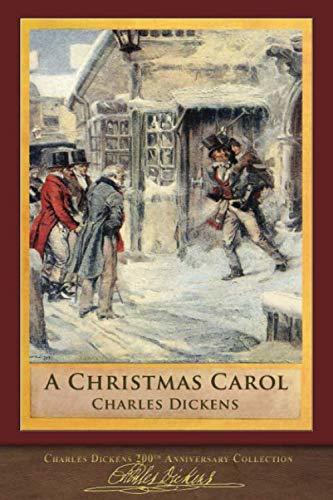
A Christmas Carol: Illustrated Classic
By Charles Dickens
So, this isn’t exactly adventine, but I read it leading up to Christmas every year. If you haven’t read this classic Dickens Christmas story, you must. It is a ghost’s tale, a morality play, a fairy story. It is a part of my yearly ritual to read and be chastened by it. Audiobook versions can be fun as well.
Advent Music: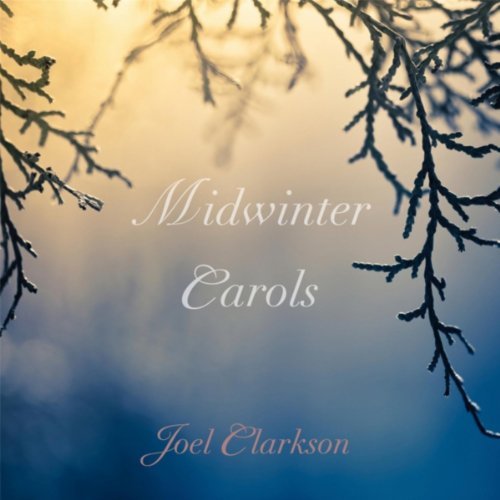
Midwinter Carols
Joel Clarkson
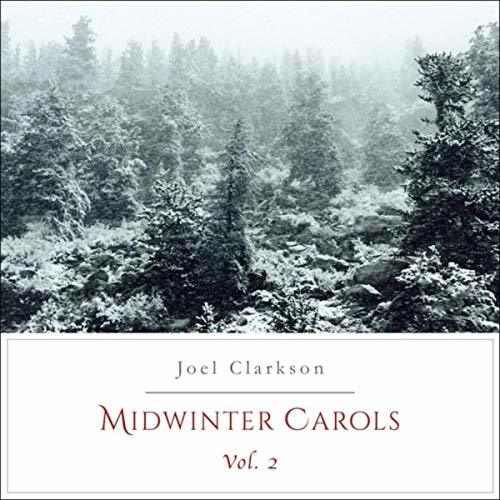
Midwinter Carols, Vol. 2
Joel Clarkson
Midwinter Carols by Joel Clarkson
I may be biased, but I think Joel’s Christmas albums are some of the best there are. These collections include a diverse selection of Christmas and advent carols, many you will know and some beautiful ones you may not, arranged in lovely, instrumental style. I leave these on repeat almost all of advent and christmastide. Also, my advent-musical theme for the podcast is taken from this album… ha! Anyway, I cannot recommend them highly enough. You can find them on Amazon, iTunes, Spotify, etc. Or you can “buy local” (i.e. Joel’s website).
Joel currently has a sale on: buy the set for $15.Check it out on his website.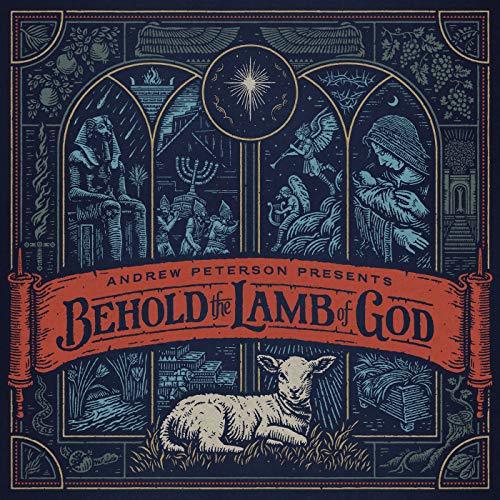
Behold The Lamb Of God
Centricity Music (CEY)
Behold the Lamb of God by Andrew Peterson
This wonderful album by singer songwriter Andrew Peterson prepares its listeners for the celebration of the Incarnation by interweaving the grand narrative of scripture with prayerful, confessional longings. I wish I could see this live!
Advent Choral — a playlist by Mark EliottIf you’re a liturgical stickler, and refuse to listen to Christmas music until actual Christmastide, your soul will glory in this excellent advent choral playlist. It’s got many of the treasures of the British choral tradition, i.e. lots of boys choirs. I was also delighted to discover a Saint Andrews theology professor made the playlist. Give it a listen!
Another Advent Resource…Each year the society for Christianity and Culture at my alma mater Biola University puts out an “advent calendar” which sends devotional reflections to your inbox with a piece of visual art, music, and poetry. In case you wondered “did this inspire Joy’s podcast” the answer is “yes! slightly! it did.” The quality of the selections have varied from year to year, but overall I’ve found this to be a really fruitful and engaging advent resource… and it’s helpful that it comes to your email every morning! I’d recommend subscribing.
Sign up for Biola Advent Here
ADVENT PODCAST ONE:The Coming
And the Word became flesh, and dwelt among us, and we saw His glory, glory as of the only begotten from the Father, full of grace and truth.
— John 1:14
Visual — Advent Wreaths and Calendars

Since around the fifth century or before, Christians have marked the four weeks before Christmas as a special time of prayer, fasting, and contemplation, preparing their hearts for the coming of Christ at Christmas. This is a part of the larger church year, which you can hear more about in the podcast.
One way of marking advent is the advent wreath. There is one candle for each Sunday in advent.We have the German Lutherans to thank for this tradition, along with many other Christmas traditions including the advent calendar, Christmas market, and Christmas tree. Consider making an advent wreath with your family so you can celebrate together! Advent wreaths are usually comprised of four or five candles. One for each of the weeks of advent respectively, and Christmas itself. A Lutheran pastor came up with the advent wreath to help the children of his congregation mark the days until Christmas.
Advent Calendars…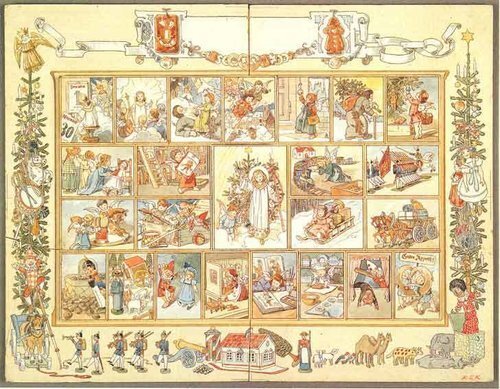
Another lovely tradition, also started by the Deutschlander, is the Advent Calendar.
These were calendars (or clocks!) where each day had a different image or quote or verse for each day of advent. They were usually delightful and Christmasy and cozy. It is no wonder they are one of the few Christian traditions that have made their way into the secular mainstream! This tradition is less explicitly Christian, but it still fosters that sense of delight, anticipation and wonder. As a little girl, my mom got me advent calendars with little milk chocolates in each window. What could make a child long for Christmas more?!
2. Literary — The Coming, by R.S. Thomas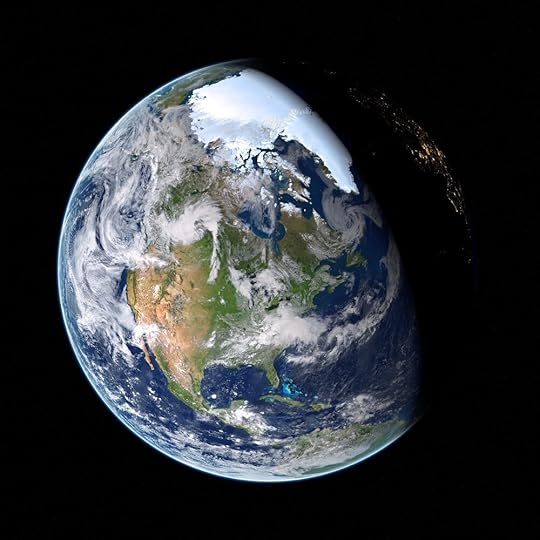
And God held in his hand
A small globe. Look he said.
The son looked. Far off,
As through water, he saw
A scorched land of fierce
Colour. The light burned
There; crusted buildings
Cast their shadows: a bright
Serpent, A river
Uncoiled itself, radiant
With slime.
On a bare
Hill a bare tree saddened
The sky. many People
Held out their thin arms
To it, as though waiting
For a vanished April
To return to its crossed
Boughs. The son watched
Them. Let me go there, he said.
We know it as O Come O Come Emannuel, but this ancient song has been sung in monasteries for 1,500 years.
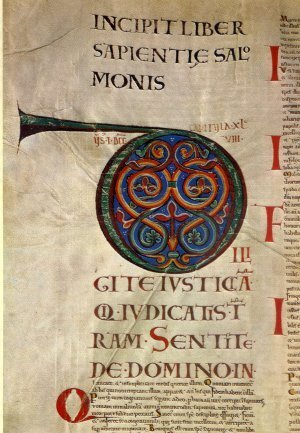
The O’ Antiphons date back to the early sixth century where they were sung in monastic communities before Christmas. The O’ Antiphons were so named because each one of them began with “O” followed by a name for Christ. There were seven O’ Antiphones, and one was meant to be sung each day the week before Christmas.
17 December: O Sapientia (O Wisdom)
18 December: O Adonai (O Lord)
19 December: O Radix Jesse (O Root of Jesse)
20 December: O Clavis David (O Key of David)
21 December: O Oriens (O Dayspring)
22 December: O Rex Gentium (O King of the Nations)
23 December: O Emmanuel (O With Us is God)
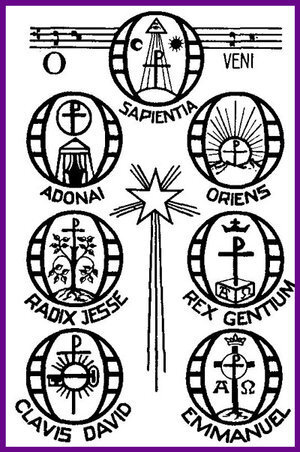
By singing these verses, the monks (or nuns!) both celebrated the beauty of Christ’s coming in the Incarnation and anticipated Christ’s second coming when he would make all things right. This is what we celebrate in advent: both the wonder of Christ’s coming into the world through the incarnation, and the hope of Christ’s second coming where he will redeem all things.
Bernard of Clairvaux, an 11th century priest, said that at advent we celebrate Christ’s Three Comings:Christ’s coming into the world at the incarnationChrist’s coming into our hearts every dayChrist’s second coming in which he will redeem all thingsAs we enter this advent season, spend a little time each day meditating on these three comings. And tell me: how do you celebrate advent?Thanks for stopping by! Tune in next week for my advent series!do you enjoy speaking with joy? want extra content and resources? consider supporting me on patreon!
November 25, 2019
Yes, And

Begin the song exactly where you are...
A small bit of personal trivia which will not surprise any regular readers: I did a lot of theatre in high school.
I loved theatre games, and perhaps best of all, improv games. A favourite was the tried and true and oh so simple game “freeze.” Two actors begin on stage, improvising some scene, bouncing off each other’s creative, dynamic story telling, weaving a narrative together that often dissolved into laughter. Sometime while the story unfolded, another actor would yell “freeze!”, the two actors would freeze mid motion, and the shouter would take one of their places, initiating a new scene in the frozen position. Hilarity often ensued, and there was nothing like the soaring satisfaction of telling a story well, making the audience laugh, engaging in the dance of creativity with another willing soul.
There was only one rule in this game: Yes, And.
You must always take the cues of your fellow actor. If they say “the purple elephant has gotten out of the grocery store” you must take this proclamation as gospel. But this doesn’t mean you’re stuck, you get to add your own voice to the story too, and your partner must listen.
Why am I apprising you of my misspent, theatrical youth?
Because I have realised that life also operates by the Yes, And principle. We all find ourselves in stories that are not entirely of our own making. We can shape our stories, but only when we are first willing to accept them as they are, regrets and radiances all accepted. Only when we see life with clear eyes and stubborn acceptance can we add our “And” to life.
But it’s more difficult to say Yes to life than you might think. We humans are masters of self deception, always convincing ourselves that we’re in a different story than we actually are, trying to make people into villains or heroes when they’re only human, convincing ourselves we’re beyond repair or reproach. Sometimes we avoid saying Yes to life because we are afraid of looking life square in the eye, afraid because we know we’ll find unspent griefs, unmet desires, regret and shame.
Life is a jumble of miracles and disappointments., so how do we tell a good story with our lives? How do we sing a good song? I think we can begin here:
Begin where you are.
Grieve what you must.
Do what you can.
This week’s episode explores these three convictions through the lens of three works of art. Listen in at the link above, and follow along in the notes below.
Begin where you are… Literary — The Singing Bowl by Malcolm GuiteThe Singing Bowlby Malcolm GuiteBegin the song exactly where you are,
Remain within the world of which you’re made.
Call nothing common in the earth or air,
Accept it all and let it be for good.
Start with the very breath you breathe in now,
This moment’s pulse, this rhythm in your blood
And listen to it, ringing soft and low.
Stay with the music, words will come in time.
Slow down your breathing. Keep it deep and slow.
Become an open singing-bowl, whose chime
Is richness rising out of emptiness,
And timelessness resounding into time.
And when the heart is full of quietness
Begin the song exactly where you are.
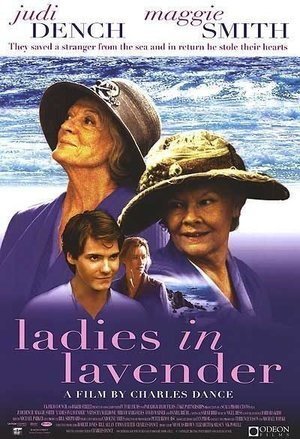
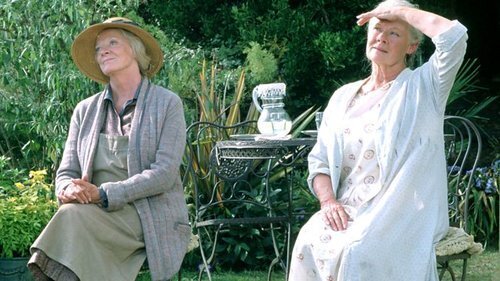
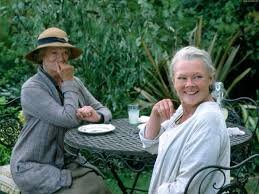
Ladies in Lavender is a story about sisters, memories, disappointment and surprise.
When a handsome, foreign musician washes up onto the shore of a pair of spinster sisters, excitement abounds. The sisters, who have lived a good, but boring life, find great delight, interest, and purpose in taking care of this talented young man. However, the unfulfilled desires of one sister’s youth jeopardise the delight of having the young man there.
The story teaches us that we must let go of our old disappointments to be able to properly enjoy the unexpected gifts that may come our way in life.
Do what you can… 3. Musical — “Soliloquy” and “Javert’s Suicide” from Les MiserablesIn the musical, the similarities of Javert and Valjean are reflected in the fact that the “Soliloquy” (Valjean’s redemption scene) and the “Suicide” (Javert’s demise) are musically almost identical. Both scenes centre around an act of mercy which changes Javert/Jean Valjean’s sense of identity and control. They are faced with a choice: Live the new life given offered to them, or descend into deception, or worse, death.
(start at 1:06 for Javert’s solo)
Both men are faced with a choice: live into the new reality you’ve been, or diminish, because they cannot go back to life before the act of mercy which marked their fate.Jean Valjean accepts his new fate, allowing hi soul to be “bought for God,” and becomes an agent of mercy in the lives of others. Javert refuses to accept his mercy marked identity and destiny, choosing to commit suicide rather than to live a life he could not understand or define. While our rejection of reality may not be as severe as Javert’s, we can refuse to accept a story that we didn’t get to tell, falling into the darkness of self deception, manipulation, and waste.
We are faced with the same question: will we accept the life purchased for us by mercy and become an agent of mercy? Further Reading: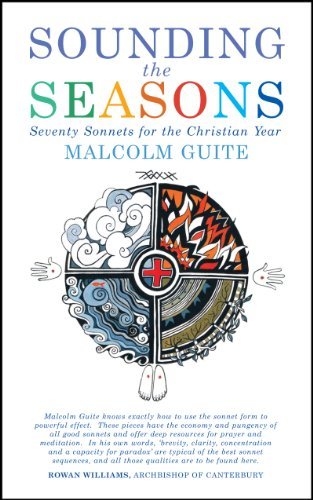
Sounding the Seasons: Seventy sonnets for Christian year
By Malcolm Guite

Waiting on the Word: A poem a day for Advent, Christmas and Epiphany
By Malcolm Guite
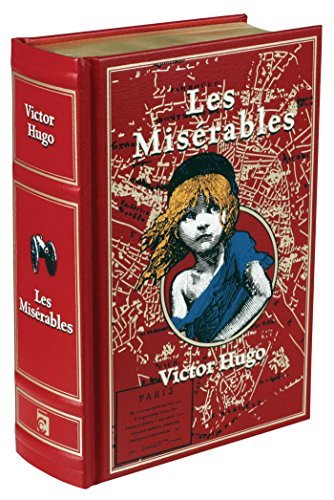
Les Miserables
By Victor Hugo
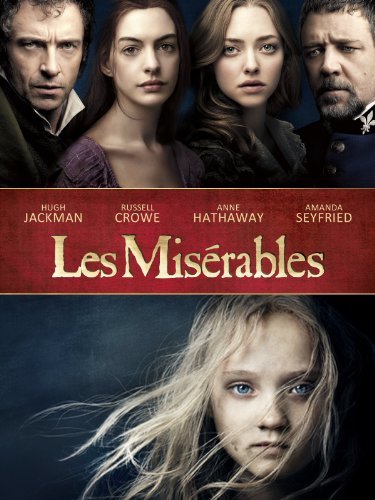
Les Miserables (2012)
Starring Russell Crowe, Anne Hathaway, Amanda Seyfried Hugh Jackman
Thanks for stopping by! Tune in next week for my advent series!do you enjoy speaking with joy? consider supporting me on patreon!
November 18, 2019
Sea Watching
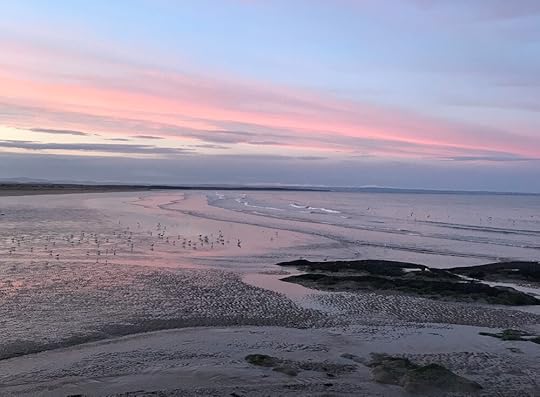
St Andrews, West Sands (2019)
Life is not hurriyng
on to a receding future, nor hankering after
an imagined past. It is the turning
aside like Moses to the miracle
of the lit bush
— R.S. Thomas, "Bright Field"
Does God reveal himself in nature? Or veil Himself with it?
These were questions which concerned R.S. Thomas, the twentieth century Welsh poet and priest. Thomas himself spent his life in three parishes of the vast loveliness of Wales, watching birds and people, praying in old weather beaten churches, and thinking about God’s presence and absence in our weary old world. How we can feel Him as close as our own heart beats in moments of natural beauty, and yet how we can also feel hollow as we wait for a flicker of his presence on a grey day of wind and waiting.
In this episode, I discuss the poetry of R.S. Thomas with Shanti Daffern.Listen below…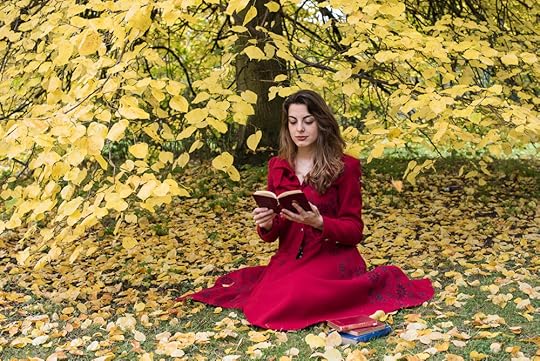
Shanti Daffern
Shanti Daffern is studying for her PhD at the University of Cambridge, where she is an (Honorary) Vice-Chancellor’s Scholar and recipient of a Peterhouse Graduate Studentship. Her doctoral research concerns pilgrimage, both as a motif and practice, in Romantic poetry, with a focus on the writing of William Wordsworth, Samuel Taylor Coleridge and John Clare. She also studied at Peterhouse as an undergraduate, before spending some time in the wild i.e. working in consulting in London. Her Master’s degree at Oxford, funded by the Arts and Humanities Research Council, included research into Coleridge’s philosophy of colour, nineteenth-century commonplace books and eighteenth-century attitudes to the Psalms as sacred and literary texts, especially in the lectures and sermons of Robert Lowth and Thomas Warton. The relationship between poetry and faith has been an abiding theme of her research, especially as mediated through attitudes to place, landscape and attention.
She first discovered the poetry of R.S. Thomas rifling through an anthology of twentieth-century poets as a young teenager, and he has been a central touchstone of her thinking ever since. Her undergraduate dissertation focused on R.S. Thomas and Habit, and her research into the poet has taken her to the RS Thomas Study Center at Bangor, the R.S. Thomas Festivals at Egyls-Fach and Aberdaron, and even seen her herding sheep on Bardsey Island, off the coast of Wales.

Poetry Pals…
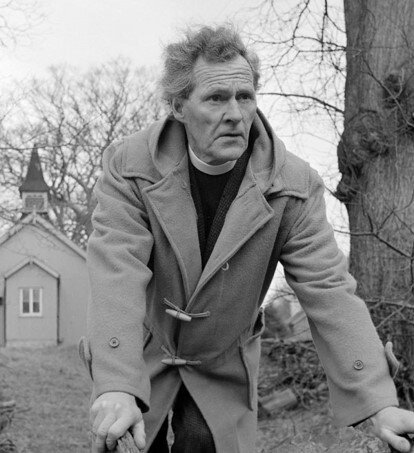
R.S. Thomas, 1913-200.
Below I’ve copied the two poems discussed in the podcast.Sea Watching, R.S. Thomas
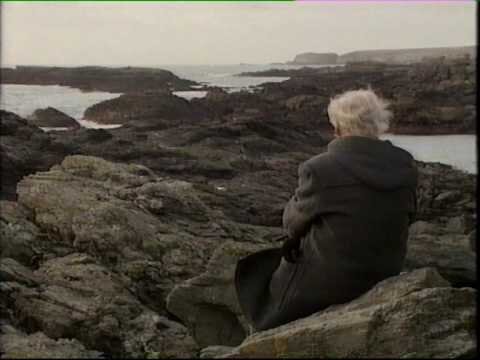
The poet himself sea watching…
Grey waters, vast
as an area of prayer
that one enters. Daily
over a period of years
I have let my eye rest on them.
Was I waiting for something?
Nothing
but that continuous waving
that is without meaning
occurred.
Ah, but a rare bird is
rare. It is when one is not looking
at times one is not there
that it comes.
You must wear your eyes out
as others their knees.
I became the hermit
of the rocks, habited with the wind
and the mist. There were days,
so beautiful the emptiness
it might have filled,
its absence
was as its presence; not to be told
any more, so single my mind
after its long fast,
my watching from praying.
Bright Field, R.S. Thomas
I have seen the sun break through
to illuminate a small field
for a while, and gone my way
and forgotten it. But that was the pearl
of great price, the one field that had
treasure in it. I realize now
that I must give all that I have
to possess it. Life is not hurrying
on to a receding future, nor hankering after
an imagined past. It is the turning
aside like Moses to the miracle
of the lit bush, to a brightness
that seemed as transitory as your youth
once, but is the eternity that awaits you.
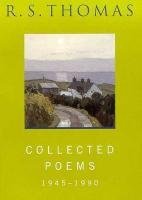
Collected poems, 1945-1990
By R. S Thomas
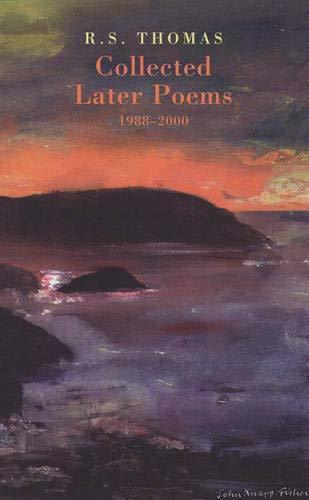
Collected Later Poems: 1988-2000
By R.S. Thomas
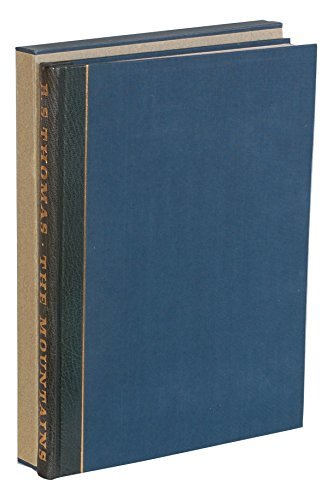
The mountains
By R.S. and John Piper THOMAS
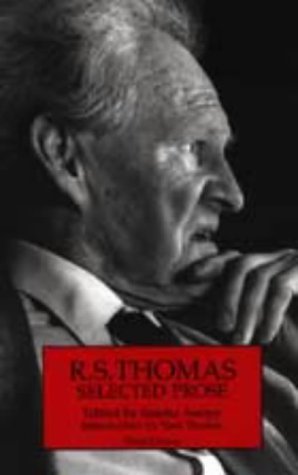
Selected Prose
By R.S. Thomas

I both love and am frightened of this picture
Thanks for stopping in!Tune in next week for another episode!do you enjoy speaking with joy? consider supporting me on patreon!
November 11, 2019
Wintering in Scotland
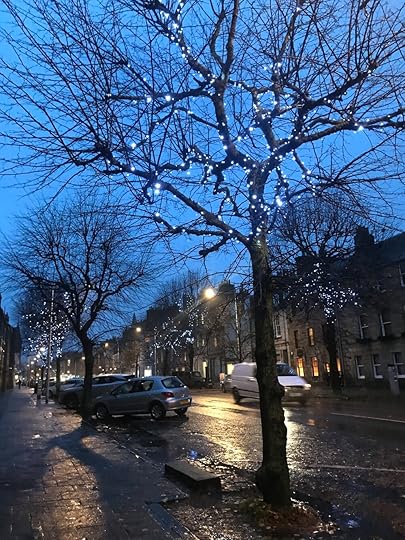
My eyelids flutter open to a dark room, lit only by the flickering candle on my window sill. The book I fell asleep reading perches precariously on my right leg, spine strained, splayed open to its final chapter. Behind the warm, golden light of the candle, I spy a navy sky; beneath the crackling of the wick, quiet hums from the usually bustling street, only interspersed by the occasional disgruntled squawk of a seagull. How long have I been sleeping? I wonder to myself.
I check the time: 4:10 in the afternoon.
This is winter in Scotland. Two weeks ago, daylight savings commenced, but there is already precious little daylight to save. The town takes on a different hue, hung already with sparkling winter lights which do not wait for Christmastide, because their crystalline comfort is needed to endure the lengthening hours of darkness. Students, professors, and shopkeepers alike complain of altered sleep schedules; it is hard not to hibernate. Winter coats have emerged, and we all mean business; hats, scarves, and gloves fly off the shelves. Even the Scotty dogs sport plaid jackets, to keep out the cold.
I have often remarked that much of Scottish culture revolves around surviving the winter months. Whisky is employed like a central heating system, warming the body from within. If this fails to keep out the cold, one could try ceilidh dancing, i.e. vigorously jumping around a small room packed with people, the friction of arms grasped desperately to spin a partner around creating a much desired heat. And, of course, this also serves another purpose: the warding off of boredom on long dark evenings. But then, if one is not so full of energy, you can sit around a fire at the pub, telling ghost stories passed down from highland relatives, or playing music well known and love, songs composed in a misty, distant time, but whose words speak to the same fears and desires of every human heart.
Living in Scotland has taught me to reckon with winter. It is easy in the modern world to live in relative rebellion against day and night, seasons, and other environmental constraints. We flip on our artificial lights, we set our thermostats to tropic temperatures and carry on with life in an eternal summer (though not too hot a summer!). It’s not as easy to do this in Scotland. I have to walk everywhere, for one thing, and so I cannot ignore the weather. And the severity of the darkness prevents me from complete ignorance.
There is much to love about winter, much to be missed if it is ignored. The northern lights accompany the darkness of winter. The long evenings engender an almost compulsive communal tug toward rest, play, and story telling. And perhaps most of all, the sleepiness that comes with changing light reminds us that we humans are not made for continual, mechanistic productivity. We are like fields which must lay fallow some years, or whose cold ground must regenerate, or tend to roots trapped deep below. It reminds us that seasons of inactivity are the not the same thing as a lack of fruitfulness. Spring follows Winter, but only after Winter has let the earth sleep. Why do we resent this wisdom?
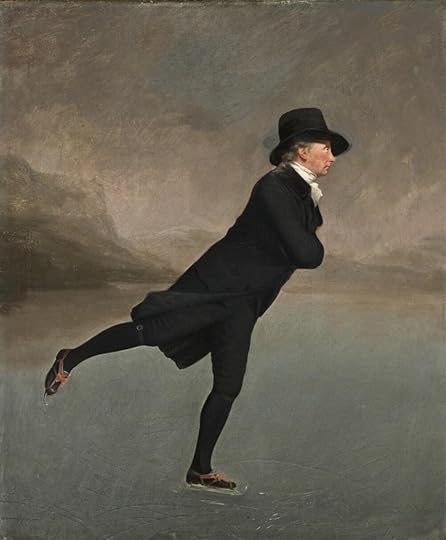
or: The Reverend Robert Walker Skating on Duddingston Loch (1790’s).
This lovely work was painted in the 1790’s but relatively unknown until its discovery in the 1940’s. It’s mysterious origins were the subject of much controversy. You can find out more in the documentary below.
May we all take fun as seriously as the sombre, skating minister…What I love best about it is how sombrely the reverend is going about the merry task of iceskating. It reminds me that leisure activities are of no small importance— they remind us that life is a gift, to be received and enjoyed. Like John Milton, we should learn that “God doth not need, Either man’s work or his own gifts.” Our work matters, but we must also take moments to rest and to worship.
They also serve who only stand and *skate*
— John Milton/Joy Clarkson revision
2. Literary — Sweet William’s Ghost
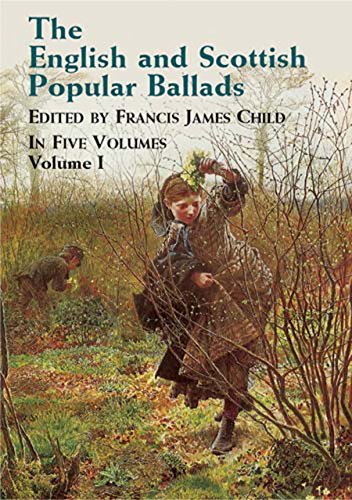
The English and Scottish Popular Ballads, Vol. 1
By Francis James Child
Fun fact: sweet William is not actually sweet but, in fact, the worst. But you’ll have to listen to the poem to find out why.3. Musical — Reels Medley, John Mock
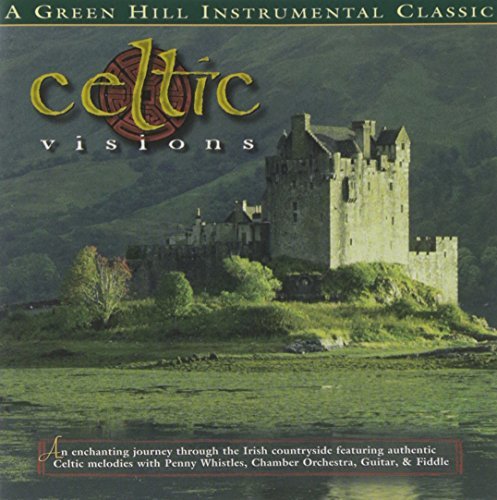
Celtic Visions
By John Mock
Traditional Celtic Music is communal. Join in with your instruments, your voice, your cheers, and when the spirit moves: dance!

Tune in next week for another episode!do you enjoy speaking with joy? consider supporting me on patreon!
November 4, 2019
Heritage

Stefania Knecht, @stefaniaknechtphoto
We enter a world we didn’t create. We grow into a life already provided for us. We arrive in a complex of relationships with other wills and destinies that are already in full operation before we are introduced. If we are going to live appropriately, we must be aware that we are living in the middle of a story that was begun and will be concluded by another.
— Eugene Peterson, Run With Horses
What heritage were you given?What heritage will you leave behind?
Your eyes, your nose, your voice, your strawberry allergy, all of these were given to you, a part of your genetic heritage. But our heritage is not only genetic, we also receive a heritage of words, attitudes, stories, toward work, food, family, faith. From our parents and our community, we may receive predispositions, toward breast cancer, bravery, depression. A heritage can be rich and beautiful, but it can also feel like a noose around our neck. What if we feel like we were given an empty legacy? A heavy heritage? Broken stories and ugly words? Are we doomed to repeat the mistakes of those who have come before us?
To be predisposed is not to be predestined.We not only receive a heritage, we create one. In glorious cooperation with our bodies, our communities, and with God, we can make something new of the world, the body, the self we’ve been given. We can be the first person in forty generations to break a cycle of guilt or to create a legacy of feasting. We have agency, and the choices we make will shape the world around us. We have a duty to steward the heritage we’ve been given, and to pass on a rich legacy to the generations that come after us.
This episode explores the beauty and complication of heritage, what our histories make of us, and what we can make of them.Listen at the widget above!
This week’s episode features the insights of Kristyn Emmer, a functional wellness coach with a passion for connection, community, and soil. Kristyn Emmer…
It took me nearly 25 years to realise it but growing up on a farm taught me everything I needed to know about human health and wellbeing. As a Wisconsin born and raised now expat to Scotland, I’m a health coach who works at the intersection of functional medicine and regenerative agriculture.
What this means is that nature’s ecosystem blueprint for growth and health helps us identify our own “why” for our own growth and health. As we know, our health is directly tied to the foods we eat, which actually means that the farm is where our health comes from, and that the health of our world’s soils has a direct impact on the health of the world’s citizens.
As a Certified Functional Medicine Health Coach, I facilitate spaces for people to move back to health and wholeness through a reconciliation process with the Earth and with the generations who brought them forth. The functional medicine approach to health coaching is a whole systems approach, where we use the stories and connections of your lifestyle to co-create an ecosystem for you to uniquely thrive within. Similarly to how farms and therefore soils thrive, it’s the connections that give us the greatest clues. So, instead of simply managing symptoms, we use our ecosystem tools such as nutrition, movement, stress reduction, sleep, and relationships to move your towards a right relationship with people, place, and yourself.
It’s my greatest joy to join folks along their journey towards health and wholeness, to be a guide in reconnecting them back to meaning and purpose.

Connect with Kristyn Here!

What heritage do you want to leave behind?
...And the Other is God. ... That means that everything I think and feel is by nature a response, and the one to whom I respond is God. I never speak the first word. I never make the first move.
— Eugene Peterson, Run with Horses
Joy Marie Clarkson's Blog
- Joy Marie Clarkson's profile
- 227 followers



